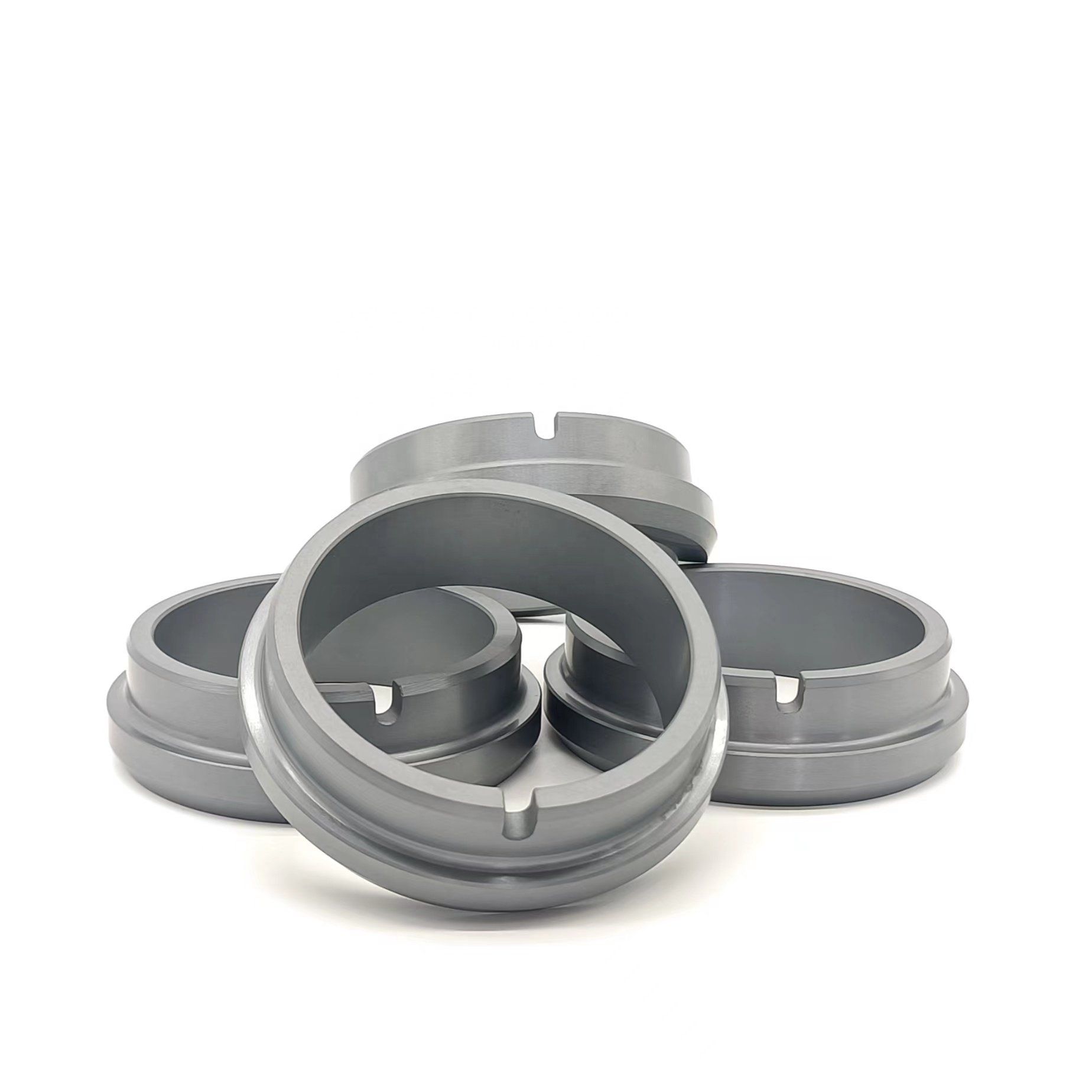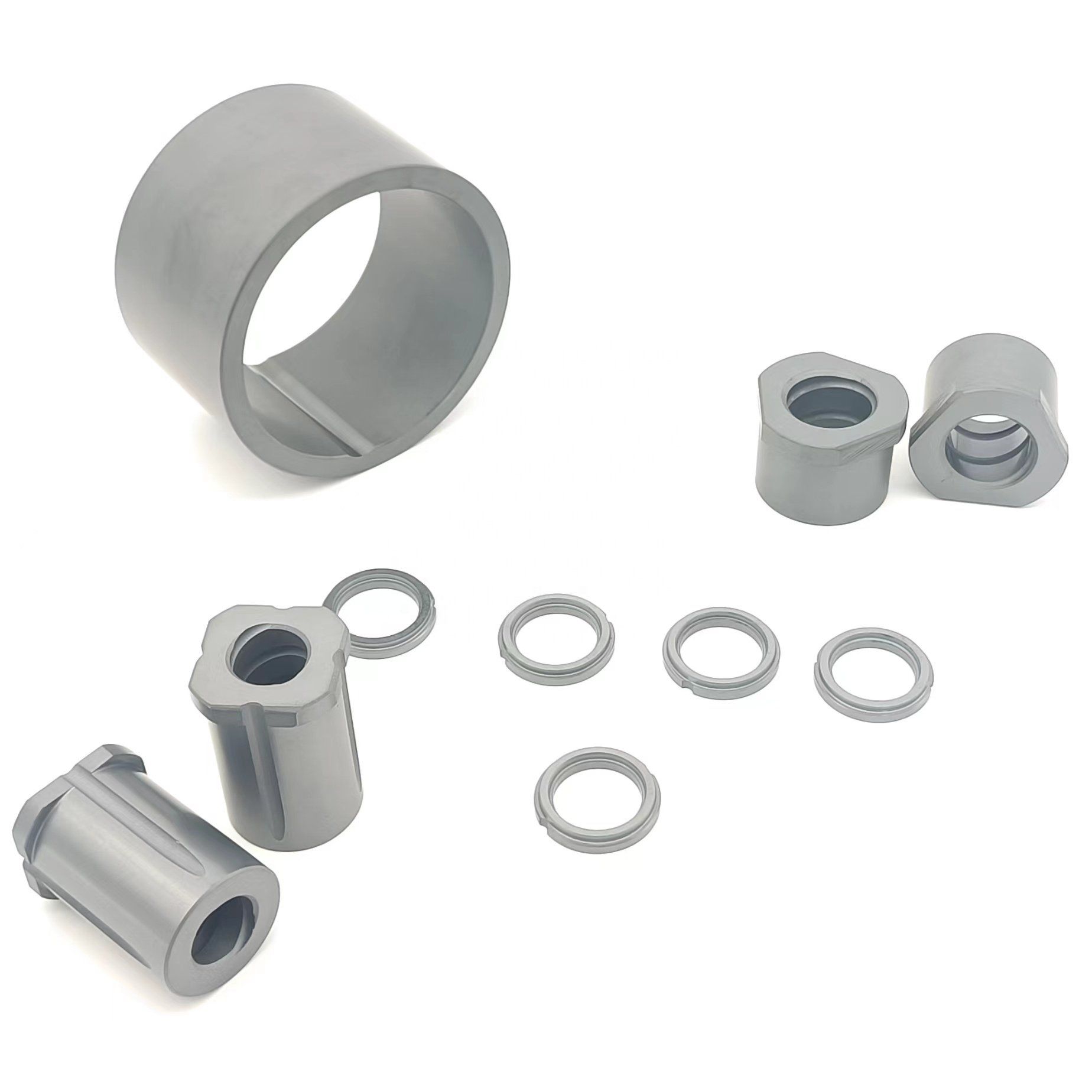Great Technologies
need great
materials
Silicon carbide ceramics - production and processing according to drawings
Buy silicon carbide ceramic components according to drawings from experts and benefit from our many years of experience in manufacturing and processing.
We process silicon carbide SiC ceramic components from small quantities for prototypes to series production. The production and processing of silicon carbide (SSiC and SiSiC) is carried out according to drawing specifications.
Silicon carbide Ceramics, which are also often referred to as silicon carbide, SiC or silicon carbide, have high thermal conductivity, high thermal shock resistance, low thermal expansion and high hardness. The corrosion resistance and chemical resistance of silicon carbide is very good. Due to its diverse properties, SiC is a popular construction ceramic in a wide range of technical applications.
The properties of silicon carbide ceramics vary according to their manufacturing methods and types, but the following values can be used as a guide for the construction:
Melting point: 2300°C
Modulus of elasticity: 430GPa
Thermal conductivity: 150 W/(mK)
Thermal expansion coefficient at 25°C-500°C: 3.8 x 10^-6/K
Relative density: 3.15 g/cm^3
Hardness: Hv1 24GPa
Silicon carbide ceramics can be manufactured and processed in different ways. Depending on the area of application, the silicon carbide is used with the required properties.
A distinction is made between the following silicon carbide ceramics in terms of properties and production:
Dense silicon carbide ceramics:
- Reaction Bonded Silicon Infiltrated Silicon Carbide (SiSiC)Pressure Sintered Silicon Carbide (SSiC)Liquid Phase Sintered Silicon Carbide (LPSSiC)Hot (Isostatic) Pressed Silicon Carbide (HpSiC, HipSiC)
Open-pored silicon carbide ceramics:
- Recrystallized silicon carbide (RSiC) nitride or oxynitride bonded silicon carbide (NSiC) silicate bonded silicon carbide
Pressureless sintered silicon carbide (SSiC) and reaction-bonded silicon carbide (SiSiC) are the most commonly used types of silicon carbide for technical applications in mechanical engineering.
Silicon carbide seals, slide rings and sealing rings
Silicon carbide SiC is ideally suited for the production of sliding rings, sealing rings and seals. Silicon carbide slide rings and seals are particularly characterized by their high hardness with a long service life and high resistance to abrasion and wear.
We manufacture silicon carbide sliding rings, plain bearings and seals according to customer requirements. Due to our many years of experience in the processing of SSiC and SiSiC silicon carbide, we are able to achieve high dimensional accuracy and reproducibility of precision components.
After sintering the blank, we mill or grind the slide rings and seals to ensure precise tolerances. With SiSiC silicon carbide rings there is also the possibility of die sinking and wire EDM.
Talk to us and find out more about the multitude of options for processing silicon carbide ceramics.
Silicon carbide bushes and sleeves
Silicon carbide SiC is ideally suited for the production of bushes and sleeves that should have a high degree of hardness and resistance to wear and abrasion. Use our high-quality silicon carbide products to guarantee your components a long service life.
We manufacture silicon carbide bushings and sleeves according to customer requirements. Based on our many years of experience in the processing of SSiC and SiSiC
Silicon carbide we are in the camp to achieve high dimensional accuracy and reproducibility of precision components.
After the sintering of the blank, the bushings and sleeves are further processed by turning, milling or grinding, so we can enable tight tolerances. With SiSiC silicon carbide bushes, there is also the possibility of sinking EDM and wire EDM, since SiSiC ceramic is an electrically conductive ceramic. This opens up further processing options.
Talk to us and find out more about the multitude of options for processing silicon carbide ceramics.
Silicon Carbide Plates, Rods and Bars (SSiC and SiSiC)
Silicon carbide plates, rods and rods are often installed in furnaces due to their properties. Silicon carbide impresses with its high thermal shock resistance, wear resistance and excellent thermal conductivity.
In addition to the use in furnace construction as base plates or as plates for separating components, silicon carbide SiSiC ceramic is ideally suited for the production of electrical heaters due to its electrical conductivity.
Silicon carbide SiSiC plates in particular can be processed well using wire EDM. Any heater geometries can thus be realized in a simple manner.
In addition to manufacturing by wire EDM, it is also possible to machine silicon carbide plates by milling or diamond sawing.
In addition to plates and semi-finished products, we also supply our customers with silicon carbide bars and rods that can be manufactured to customer requirements.
Contact us to purchase silicon carbide plates, bars or rods or send us a drawing for machining your final SiC or SiSiC product.
Pressureless sintered silicon carbide ( SSiC ) ceramic
Pressureless sintered silicon carbide SSiC is produced in the sintering process like conventional technical ceramics.
For this purpose, the component is pressed in a mold and sintered at up to 2200°C. After sintering, the component can be ground to size in order to achieve the required dimensional accuracy. SSiC is characterized by its high strength and hardness. In addition, this type of silicon carbide has high thermal conductivity.
SSiC silicon carbide is processed by milling, turning and grinding.
Reaction bonded silicon carbide (SiSiC) ceramic
Reaction-bonded silicon carbide (SiSiC) consists of 85%-94% SiC and 15-6% metallic silicon. Thus, SiSiC is electrically conductive.
Electrically conductive ceramics can easily be machined by die sinking or wire EDM. With SiSiC silicon carbide, this brings the advantage of almost any geometry design.
SiSiC has almost no residual porosity, this is achieved by infiltrating the silicon carbide with metallic silicon. The advantage of this technique over powder sintering is that the components do not shrink. This means that very precise and large components can be manufactured.
However, the disadvantage of SiSiC silicon carbide components is the limited application temperature of 1400°C.
Contact us to learn more about the possibilities of processing and different areas of application of silicon carbide.
Silicon carbide components: production and machining
Send us your request by email or use the contact form:














